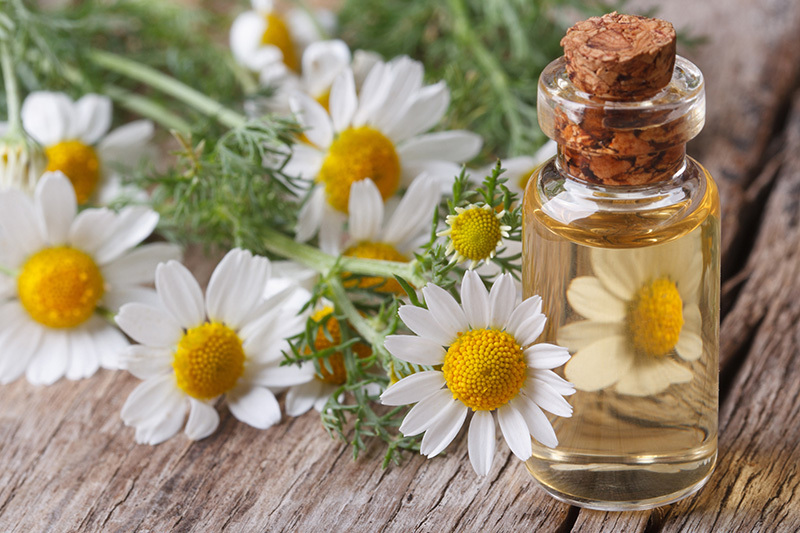Secrets to Long-Lasting Poinsettias
Posted on 30/05/2025
Secrets to Long-Lasting Poinsettias: A Comprehensive Guide
Poinsettias are synonymous with the holiday season, boasting vivid colors and festive cheer. However, these stunning plants are notorious for their short lifespan when not properly cared for. If you're eager to discover the secrets to long-lasting poinsettias and want your holiday blooms to thrive throughout and even beyond the winter months, you've come to the right place. In this detailed guide, we'll unveil expert tips and the latest research-backed methods to extend the life of your poinsettia plants.
Understanding the Poinsettia: Origins and Mystique
The poinsettia (Euphorbia pulcherrima) is native to Mexico and Central America, where it grows as a perennial shrub. Named after Joel Poinsett, the U.S. ambassador who brought it to America in the 1820s, this vibrant plant has captivated gardeners and holiday enthusiasts ever since. Knowing where poinsettias come from and how they grow helps in providing optimal care, making your poinsettia last longer after the holidays.

Choosing the Best Poinsettia for Longevity
One of the key secrets to long-lasting poinsettias starts before you even bring one home. Selecting a healthy plant will set the stage for weeks--or even months--of spectacular color. Here's what to look for:
- Vibrant Bracts: The colorful leaves (bracts) should be bright, unblemished, and fully extended.
- Healthy True Flowers: Inspect the tiny yellow buds (cyathia) in the center. The plant is at peak freshness if these are tight and not shedding pollen.
- Lush Green Leaves: Foliage should be deep green with no signs of wilting or yellowing.
- No Signs of Pests or Disease: Check for any webbing, mildew, spots, or insect damage.
- Well-Watered Soil: The soil should be moist, not waterlogged or dry.
Tip: Never buy a poinsettia exposed to cold drafts or left near shop doors!
Perfect Placement: Finding the Ideal Spot
The location where you place your poinsettia profoundly affects its lifespan. Here are vital placement secrets for long-lasting performance:
- Light: Your poinsettia will thrive in bright, indirect sunlight. Place it near a window with plenty of natural light but away from the harsh midday sun, which can scorch the bracts.
- Temperature: These plants prefer daytime temperatures between 65-75?F (18-24?C) and nighttime temperatures above 60?F (15?C). Avoid sudden temperature changes and chilly windowsills.
- No Drafts or Heat Sources: Keep your poinsettia away from doors, vents, fireplaces, and radiators. Extreme temperatures and drafts shorten its life.
- Humidity: Moderate humidity mimics their native environment. If your home is dry in winter, consider using a room humidifier or place a tray of pebbles and water near the plant.
Proper Watering: The Real Secret Ingredient
Incorrect watering is the most common cause of premature poinsettia loss. Mastering the balance is essential for extending poinsettia longevity:
- Check Soil Moisture: Stick your finger into the soil; water only when the top inch feels dry.
- Water Evenly: Pour lukewarm water until it drains out from the bottom. Remove excess water from saucers to prevent root rot.
- Avoid Overwatering: Soggy soil leads to root diseases and yellowing leaves.
- Don't Let Soil Dry Out Completely: Drought stress causes rapid wilting and dropped leaves.
Insider tip: If your poinsettia came in a foil wrap, puncture or remove the wrap to ensure proper drainage.
Humidity and Air Quality: Mimicking Tropical Origins
Poinsettias are happiest in moderately humid air. Secrets to long-lasting poinsettias include providing the right humidity level:
- Mist Regularly: Light misting every few days refreshes leaves and bracts.
- Skip the Drafts: Avoid areas near fans or frequently opened doors.
- Boost Humidity: A pebble tray or room humidifier works wonders in dry climates or heated homes.
Fun Fact: Poinsettias thrive outdoors in regions with mild winters, where humidity levels are naturally balanced.
Feeding Your Poinsettia: Fertilizer Fundamentals
Fertilizing is not required while your poinsettia is in bloom. However, if you plan to keep it growing after the holidays and want to discover the secrets to poinsettia rebloom, here's how to do it right:
- Wait Until Spring: After the bracts start to fade in March or April, begin feeding your plant every 2-4 weeks.
- Choose a Balanced Fertilizer: Use a water-soluble, all-purpose houseplant fertilizer (20-20-20), diluted to half strength.
- Don't Overdo It: Avoid fertilizing while the plant is dormant or in active bloom.
Pruning and Maintenance: Keeping It Tidy
Regular pruning and cleaning are critical for long-lasting poinsettias. Here's how to keep your plant in peak shape:
- Remove Faded Leaves: Trim any yellowing or wilted leaves to reduce stress and mold risk.
- Pinch Back Stems: In spring, cut back stems to about 6 inches to promote bushier new growth.
- Monitor for Pests: Inspect weekly for whiteflies, fungus gnats, or mealybugs. Treat promptly if spotted.
Pruning encourages new shoots and contributes to a full, vibrant poinsettia next season!
Keeping Poinsettias Alive After the Holidays: Year-Round Care
Want your poinsettia to last beyond Christmas? Here's a month-by-month guide to caring for a poinsettia year round:
Winter (December - February)
- Enjoy your poinsettia's bloom. Maintain steady light, warmth, and steady moisture.
- Avoid fertilizing at this time.
Early Spring (March - April)
- When colored bracts begin to fade, reduce watering. Allow soil to dry slightly between waterings.
- Cut back stems to 4-6 inches above the soil to encourage new shoots.
- Move to a sunny windowsill and resume light fertilizing.
Summer (May - August)
- Can be moved outdoors when night temperatures consistently exceed 55?F (13?C).
- Provide morning sun and afternoon shade.
- Pinch new growth in June and July to encourage branching.
- Water and feed regularly. Watch for pests.
Fall (September - November)
- Bring indoors before first frost.
- To rebloom, keep your poinsettia in uninterrupted darkness for at least 14 hours every night starting in late September. During days, return to bright sunlight.
- Continue this cycle for 8-10 weeks until color develops on the bracts.
Note: Strict darkness is key to triggering blooming--use a box or dark closet for covering.
Common Care Mistakes: What to Avoid
Even the best intentions can cut the poinsettia's life short. Avoid these pitfalls:
- Exposure to Chilling Temperatures: Cold snaps, especially below 50?F (10?C), cause leaf drop.
- Letting Soil Dry Out Fully: Drought is as dangerous as overwatering.
- Placing in Low-Light Areas: Insufficient light leads to leggy, weak plants.
- Skipping Pruning & Pest Checks: Neglected plants quickly decline.
- Forgetting to Remove Wrappers: Foil covers trap water and rot roots.
Poinsettia Myths and Facts
- Myth: Poinsettias are extremely toxic to pets.
Fact: While the sap can cause mild stomach upset and skin irritation, serious poisoning is rare. Keep out of reach, but no need for panic. - Myth: Stems break easily, ending the plant's life.
Fact: Broken stems can be pruned; this often encourages new growth! - Myth: Poinsettias only last a few weeks.
Fact: With proper care, poinsettias can stay healthy for many months--and even years!
Propagating Poinsettias: Keep Your Favorites Forever
If you've unlocked the secrets of keeping poinsettias alive all season, perhaps you'd like to try your hand at propagation. Growing new plants from cuttings is rewarding and ensures you never run out of holiday cheer!
- Take Cuttings: In late spring, snip 3-4 inch sections of healthy stems. Remove lower leaves.
- Dip in Rooting Hormone: This encourages faster, healthier root development.
- Plant in Moist Soil: Use a peat/perlite mix and cover loosely with plastic to retain humidity.
- Provide Light and Warmth: Place in a bright, indirect spot at ~72?F (22?C).
- Transplant: Once rooted (4-6 weeks), move to small pots and begin regular care.

Frequently Asked Questions about Long-Lasting Poinsettias
How long do poinsettias last indoors?
With ideal conditions, poinsettias can last from 2 to 6 months inside. Some can thrive year-round and rebloom next winter.
Can I plant my poinsettia outside?
Yes! In frost-free climates (USDA zones 9-11), poinsettias can become large perennial shrubs. In colder zones, keep them as indoor plants or bring them in each fall.
How do I make my poinsettia turn red again?
Short days and long nights are the trigger. Provide 14 hours of total darkness every night for at least 8 weeks, starting in early fall.
Conclusion: The Ultimate Secret to Long-Lasting Poinsettias
When it comes to revealing the ultimate secrets to long-lasting poinsettias, consistency is key: right placement, balanced watering, proper light, and a touch of seasonal discipline. By understanding your plant and mimicking its native habitat, you unlock months--or even years--of colorful, joyful blooms.
With these expert tips, your poinsettia will be the envy of the neighborhood, not just for one holiday, but for seasons to come!







